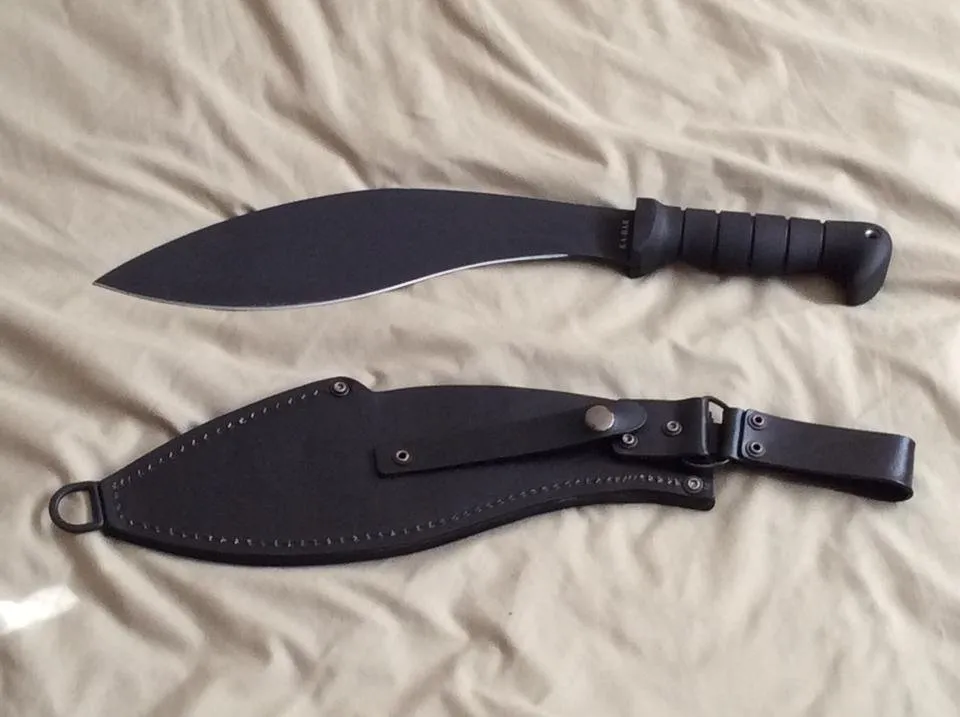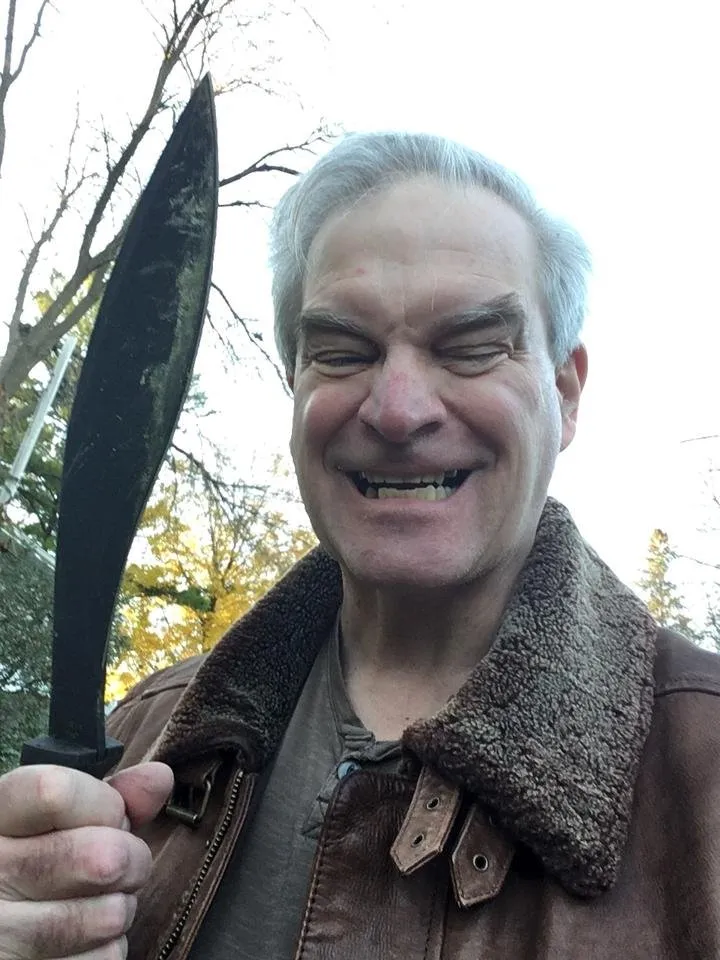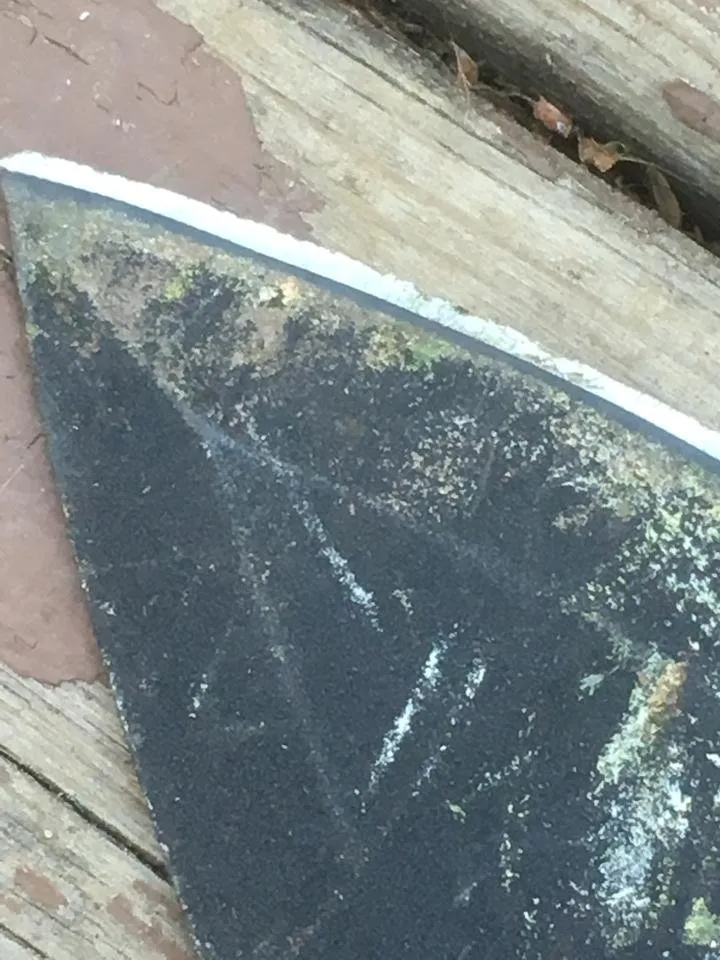The kukri was originally designed as a Nepalese fighting knife. And they’ve by no means gone out of style for that purpose. Gurkha troops stationed in Afghanistan still take them into combat.
I took mine on a combat mission to the back yard clearing brush and chopping up piles of sticks, twigs, and branches as well as cutting back some sumac and evil buckthorn. I got a Ka-Bar 2-1249-9, at $40 not a top-of-the-line blade but not a cheapie off-brand knockoff either. It is a full tang (i.e. the metal extends to within the handle) 11.5 inch (292 mm) blade made from high-carbon 1085 steel. The handle is kraton polymer, a synthetic hard rubber. Some knife handles feel tiny (I’m a big guy), but this one seemed quite comfortable.

Is it a knife or is it a machete? Sort of both, a very large knife or
a very small machete, depending on what you’re using it for. With a bit of hatchet in the mix for good measure. And if the zombie apocalypse comes to my neighborhood, I’m confident that my Ka-Bar kukri will do a fine job of separating zombie heads from zombie torsos. If my he’s a crazy mofo, let’s find an easier target look doesn’t scare off the zombies first:

By this point, the kukri is already showing signs of use. It would go through a hand full of quarter-inch sticks with one chop. Also inch-thick (25mm) softwood like sumac. Harder wood like maple took several chops to get through. Buckthorn is an evil invasive species that chopping only slows down. Generally, I prefer to keep herbicide and pesticide use to a bare minimum in my yard but will make an exception for buckthorn. Where the buckthorn had been cut back, my wife used high-concentrate glyphosate to paint where the blade had exposed the inner wood. Die buckthorn, die.
I spent several hours chopping, being very careful. If it can cut through a third of an inch of hardwood with one chop, it can do the same to a third of an inch finger. But eventually my mind started to wander and I found myself swinging the blade almost casually. Time to stop, while my left hand still has five digits.
The blade got a workout:

Some of the brush I cut was right next to a low cinderblock wall. Yeah, I’m a bit of a klutz. The tip of the blade took some nicks and I’ll need to sharpen it before the next use.

Although there are many, many types of steel used to make knives, they fall into two broad categories, high-carbon and stainless. Pluses and minuses either way. High-carbon holds an edge better for longer periods of use like chopping or for hunters who field-dress their kill, but is somewhat more difficult to sharpen once dulled and susceptible to oxidation. Stainless doesn’t hold an edge as well but is easier to sharpen and resists rusting better. So before putting my kukri into its sheath for storage, I cleaned it and gave it a thin coating of olive oil to help protect it from rusting.

In other news,
You Really Need to Follow @donallogue